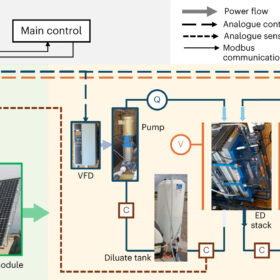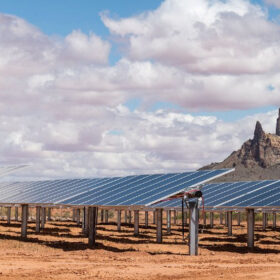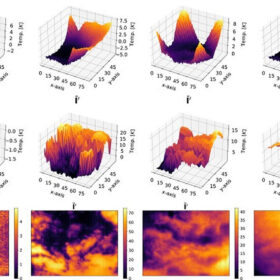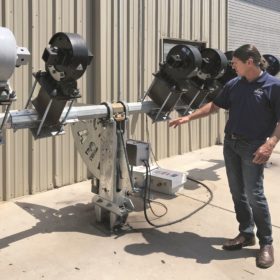MIT scientists build PV-driven desalination system that reacts to changes in sunlight
The proposed brackish water desalination system uses photovoltaic electrodialysis to enable direct-drive desalination at high production rates. It already operated for 6 months on real brackish groundwater and was reportedly able to use 94% of the extracted PV energy.
The Hydrogen Stream: Asahi Kasei to test alkaline water electrolyzer
Japan’s Asahi Kasei is testing a new alkaline water electrolyzer, while China has started developing its first 100 kg vehicle-mounted liquid hydrogen system.
Novel PV-driven desalination tech achieves lower levelized cost of water
Scientists led by the Massachusetts Institute of Technology (MIT) have designed a new PV-powered desalination system based on the time-variant electrodialysis reversal (EDR) technology. The proposed system reportedly achieves lower levelized cost of water than conventional solar-powered desalination techs.
Weekend Read: Energy sovereignty
Native American lands boast serious PV potential in the United States but getting projects off the ground hasn‘t always been easy. Different tribes are willing to take power generation into their own hands and the landscape could be shifting, thanks to funding from the US Inflation Reduction Act (IRA) and other programs.
Integrating sky images, global solar irradiance into solar forecasting algorithms
A research team in the United States has created a novel approach to integrate raw sky images and global solar irradiance measurements, solar nowcasting, and intra-hour forecasting. The methodology utilizes low-cost radiometric IR cameras instead of expensive ceilometers.
Weekend Read: Pushing perovskite PV limits
The perovskite solar race is heating up, with a cue of manufacturers forming to test products at the US Department of Energy’s (DoE) PV commercialization facilities, and academics on both sides of The Pond announcing new advances in recent months.
Net losses triple at US tracker maker after acquisition
New Mexico-based Array Technologies is keen to emphasize the revenue benefits of buying Spanish rival STI Norland and said US President Joe Biden’s Inflation Reduction Act would also be good for business.
The Hydrogen Stream: Airbus plans flight test with direct combustion engine fueled by hydrogen
Elsewhere, Chinese researchers have synthesized ultrafine Pd100-xCux nanodot-modified TiO2 photocatalysts that display optimized energy barrier for interfacial hydrogen desertion, which reportedly exhibits excellent H2-evolution activity and stability, and Mitsubishi Heavy Industries has presented its plans to establish the Takasago Hydrogen Park, calling it the world’s first center for validation of hydrogen-related technologies, from hydrogen production to power generation.
Chevron turns to renewables to power Australian operations
The power company has announced it will build 500 MW of renewable energy projects to power some of its global facilities under a four-year agreement with Canada’s Algonquin Power & Utilities.
Washington state’s 100% renewables bill passes both Houses
Washington is looking to become the fourth state to make the move to 100% renewable electricity, with only a senate review and the hand of Governor Inslee left in the path of SB 5116.










